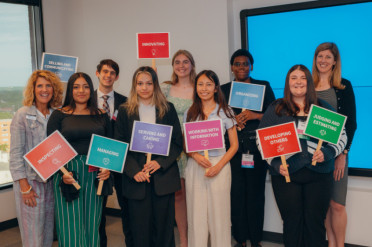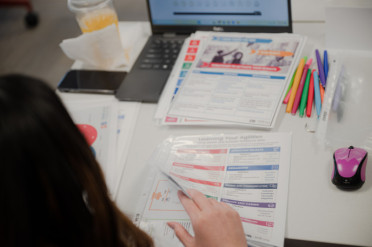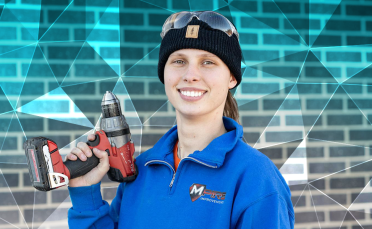
Expand Career Options Using Agilities

Want to explore potential careers, but aren’t sure where to start? Agilities.org is a great resource designed to help people explore how their skills align with different careers and broaden their career options. Parents and teachers can also use it to inspire young career-seekers.
What Are Agilities?
Agilities are 10 clusters of activities that capture your job-related strengths and interests.
- Developing others
- Innovating
- Inspecting
- Judging and estimating
- Managing
- Operating objects
- Organizing
- Selling and communicating
- Serving and caring
- Working with information

The framework was developed by The DeBruce Foundation, a national organization committed to expanding pathways to economic growth and opportunity. Part of that mission is to help people research and discover fulfilling careers.
“Our workforce is rapidly evolving, and as such, the way we prepare people for careers must change too. In 2014, our team asked ourselves a guiding question: ‘How do we equip individuals to succeed in our workforce — now and in the future?’” said Dr. Leigh Anne Taylor Knight, executive director and COO of The DeBruce Foundation.
By evaluating data from the Bureau of Labor Statistics on about 1,000 jobs, The DeBruce Foundation identified core work functions and grouped those into the Agilities. From there, they developed an assessment tool called the Agile Work Profiler that helps people identify and understand their own Agilities, then map them to various careers.
“We created the Agile Work Profiler to help individuals — starting in middle school and continuing throughout their career — identify the work skills they are best at and most enjoy using,” Taylor Knight said.
Find Your Agilities

The Agile Work Profiler is a free, online career assessment questionnaire that takes about 15 minutes. The quiz includes about 70 questions, most of which are centered around 24 core skills. For those, you rank how adept you are at certain tasks and how much you enjoy them.
The tool distills your answers into your top three Agilities, explains your strengths and provides examples of how to describe those skills in your resume. You can also visit landing pages to explore careers that use each Agility and find educational requirements for those jobs.
“When you know your Agilities, you’re better equipped to understand the many careers in the economy that need your skills,” Taylor Knight said. “It equips you to pivot to a new role or sector — making you more agile in a dynamic workforce. Also, if you know that your dream job heavily relies on an Agility that isn’t currently in your top rankings, you now know what Agility to build to reach your dream job.”
While many career assessment tools are designed to match you with a specific career, the Agile Work Profiler is designed to help you broaden possible career paths.
“When a young person takes the Agile Work Profiler, it empowers them to make decisions about themselves and their future, based on what they’re good at and what they like to do,” Taylor Knight said. “It gives them agency for their future and confidence in themselves.”
The tool shouldn’t be confused with a personality assessment. It’s based on work-related skills. So, as you learn and grow professionally, your Agilities will likely change.
“Just like you, your ranked Agilities will change,” Taylor Knight said. “For example, after a student completes a season as captain of their soccer team, they might find that their Managing Agility ranks higher than before. Similarly, when students take the Agile Work Profiler before and after an internship experience, the data shows that their ranked Agilities change.”
Helping Kids Succeed

The data also shows that young people using the Agilities as part of their career exploration and job searches are seeing results. The DeBruce Foundation shared several stories of student success.
- Agilities help students stand out in interviews. “These Agilities are for real!” one student told her teacher after an interview. Her interviewer was so impressed with her performance that they asked more about Agilities. And she got the job!
- Agilities help students explore careers with greater confidence. One student thought he wanted to pursue a particular career, but when he learned what it entailed, he decided it wasn’t for him. Worried he’d have to start his search from scratch, he used his Agilities to find an adjacent career in the same industry that was a much better fit.
- Agilities help expand pathways. One student could only picture himself working in fast food, but the Agilities opened his eyes to other possibilities. He decided to continue his education and earned an associate of arts in management, which has opened up more options for his future.
So, how can you start leveraging the Agilities tools for your children or students? Cindy Schluckebier, integration and training manager at The DeBruce Foundation, has some tips.
“First, take the Agile Work Profiler yourself,” she said. Being familiar with the tool will help both parents and educators bring it to life for young people.
Tips for Parents
Schluckebier recommends taking the assessment with your kids “to open conversations about what they like to do and what they do well.” She also advises keeping your eyes open at home. Being aware of the framework enables parents to see Agilities in everyday life and use that to help them explore their Agilities.
“Parents have an incredible opportunity to help their child build career literacy and prepare for a bright career,” she said. “Do they love taking apart or fixing things around the house? They’re skilled at Operating Objects. Do they encourage their siblings or teammates? They’re exhibiting their Developing Others Agility. Are they always tidying their room? They might enjoy using their Organizing Agility. Help them notice their skills and celebrate them!”
Tips for Educators
Similarly, teachers familiar with the Agilities and available resources can help bring the topic to life for their students.
“Our national public opinion research affirms that young people are interested in self-discovery and want to know how their unique interests and strengths can apply to their future careers,” Schluckebier said. “By connecting class activities with the Agilities framework, students start connecting the dots between today’s activities and their future opportunities.”
The DeBruce Foundation offers a full suite of free resources for educators, plus online training tools to learn how to use them effectively in your classroom. Teachers can also download free welcome kits full of ideas for incorporating the framework at different levels, including Elementary, Middle School and High School and Beyond.
Whether you want to support your kids or students — or even explore possibilities for yourself — Agilities provides a great resource to add to your toolbox.



